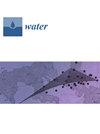Enhancing Evapotranspiration Estimations through Multi-Source Product Fusion in the Yellow River Basin, China
IF 3
3区 环境科学与生态学
Q2 ENVIRONMENTAL SCIENCES
引用次数: 0
Abstract
An accurate estimation of evapotranspiration (ET) is critical to understanding the water cycle in watersheds and promoting the sustainable utilization of water resources. Although there are various ET products in the Yellow River Basin, various ET products have many uncertainties due to input data, parameterization schemes, and scale conversion, resulting in significant uncertainties in regional ET data products. To reduce the uncertainty of a single product and obtain more accurate ET data, more accurate ET data can be obtained by fusing different ET data. Addressing this challenge, by calculating the uncertainty of three ET data products, namely global land surface satellite (GLASS) ET, Penman–Monteith–Leuning (PML)-V2 ET, and reliability-affordable averaging (REA) ET, the weight of each product is obtained to drive the Bayesian three-cornered Hat (BTCH) algorithm to obtain higher quality fused ET data, which are then validated at the site and basin scales, and the accuracy has significantly improved compared to a single input product. On a daily scale, the fused data’s root mean square error (RMSE) is 0.78 mm/day and 1.14 mm/day. The mean absolute error (MAE) is 0.53 mm/day and 0.84 mm/day, respectively, which has a lower RMSE and MAE than the model input data; the correlation coefficients (R) are 0.9 and 0.83, respectively. At the basin scale, the RMSE and MAE of the annual average ET of the fused data are 11.77 mm/year and 14.95 mm/year, respectively, and the correlation coefficient is 0.84. The results show that the BTCH ET fusion data are better than single-input product data. An analysis of the fused ET data on a spatiotemporal scale shows that from 2001 to 2017, the ET increased in 85.64% of the area of the Yellow River Basin. Fluctuations in ET were greater in the middle reaches of the Yellow River than in the upstream and downstream regions. The BTCH algorithm has indispensable reference value for regional ET estimation research, and the ET data after BTCH algorithm fusion have higher data quality than the original input data. The fused ET data can inform the development of management strategies for water resources in the YRB and provide a deeper understanding of the regional water supply and demand balance mechanism.通过多源产品融合加强中国黄河流域的蒸散量估算
准确估算蒸散量(ET)对于了解流域水循环和促进水资源的可持续利用至关重要。虽然黄河流域有多种蒸散发产品,但由于输入数据、参数化方案、尺度转换等原因,各种蒸散发产品都存在很多不确定性,导致区域蒸散发数据产品存在很大的不确定性。为了减少单一产品的不确定性,获得更准确的蒸散发数据,可以通过融合不同的蒸散发数据来获得更准确的蒸散发数据。针对这一难题,通过计算全球陆表卫星(GLASS)ET、Penman-Monteith-Leuning(PML)-V2 ET 和可靠性-可负担性平均(REA)ET 三种 ET 数据产品的不确定性,得到每种产品的权重,从而驱动贝叶斯三角帽(BTCH)算法,得到更高质量的融合 ET 数据,然后在站点和流域尺度上进行验证,与单一输入产品相比,精度有了显著提高。在日尺度上,融合数据的均方根误差(RMSE)分别为 0.78 毫米/天和 1.14 毫米/天。平均绝对误差(MAE)分别为 0.53 毫米/天和 0.84 毫米/天,RMSE 和 MAE 均低于模式输入数据;相关系数(R)分别为 0.9 和 0.83。在流域尺度上,融合数据的年平均蒸散发均方根误差和均方根误差分别为 11.77 毫米/年和 14.95 毫米/年,相关系数为 0.84。结果表明,BTCH ET 融合数据优于单一输入产品数据。对融合后的蒸散发数据进行时空尺度分析表明,2001-2017 年,黄河流域 85.64%的区域蒸散发增加。黄河中游地区的蒸散发波动大于上下游地区。BTCH算法对区域蒸散发估算研究具有不可或缺的参考价值,BTCH算法融合后的蒸散发数据比原始输入数据具有更高的数据质量。融合后的蒸散发数据可为制定长江流域水资源管理策略提供依据,并加深对区域水资源供需平衡机制的理解。
本文章由计算机程序翻译,如有差异,请以英文原文为准。
求助全文
约1分钟内获得全文
求助全文
来源期刊

Water
WATER RESOURCES-
CiteScore
5.80
自引率
14.70%
发文量
3491
审稿时长
19.85 days
期刊介绍:
Water (ISSN 2073-4441) is an international and cross-disciplinary scholarly journal covering all aspects of water including water science and technology, and the hydrology, ecology and management of water resources. It publishes regular research papers, critical reviews and short communications, and there is no restriction on the length of the papers. Our aim is to encourage scientists to publish their experimental and theoretical research in as much detail as possible. Full experimental and/or methodical details must be provided for research articles. Computed data or files regarding the full details of the experimental procedure, if unable to be published in a normal way, can be deposited as supplementary material.
 求助内容:
求助内容: 应助结果提醒方式:
应助结果提醒方式:


